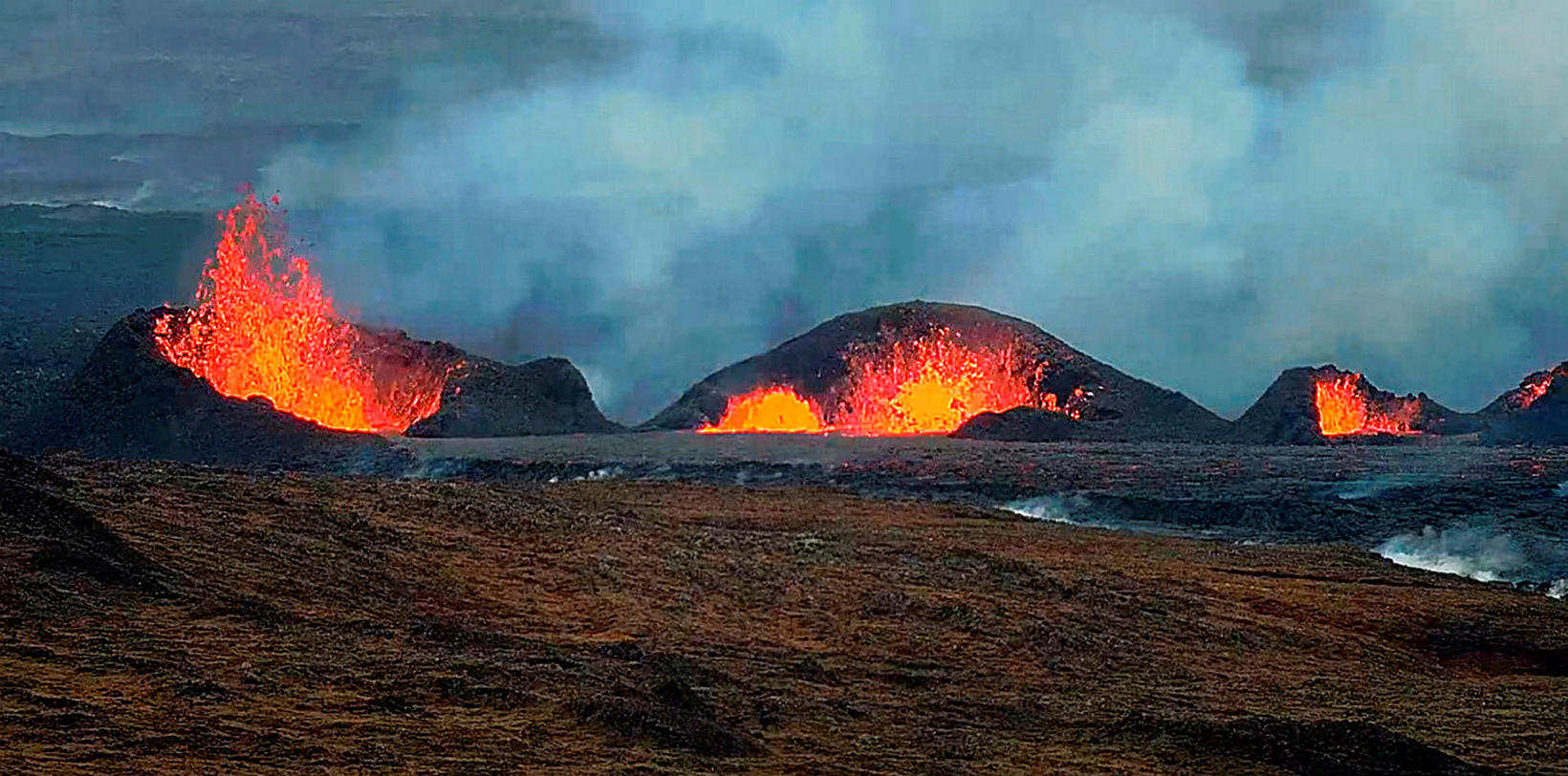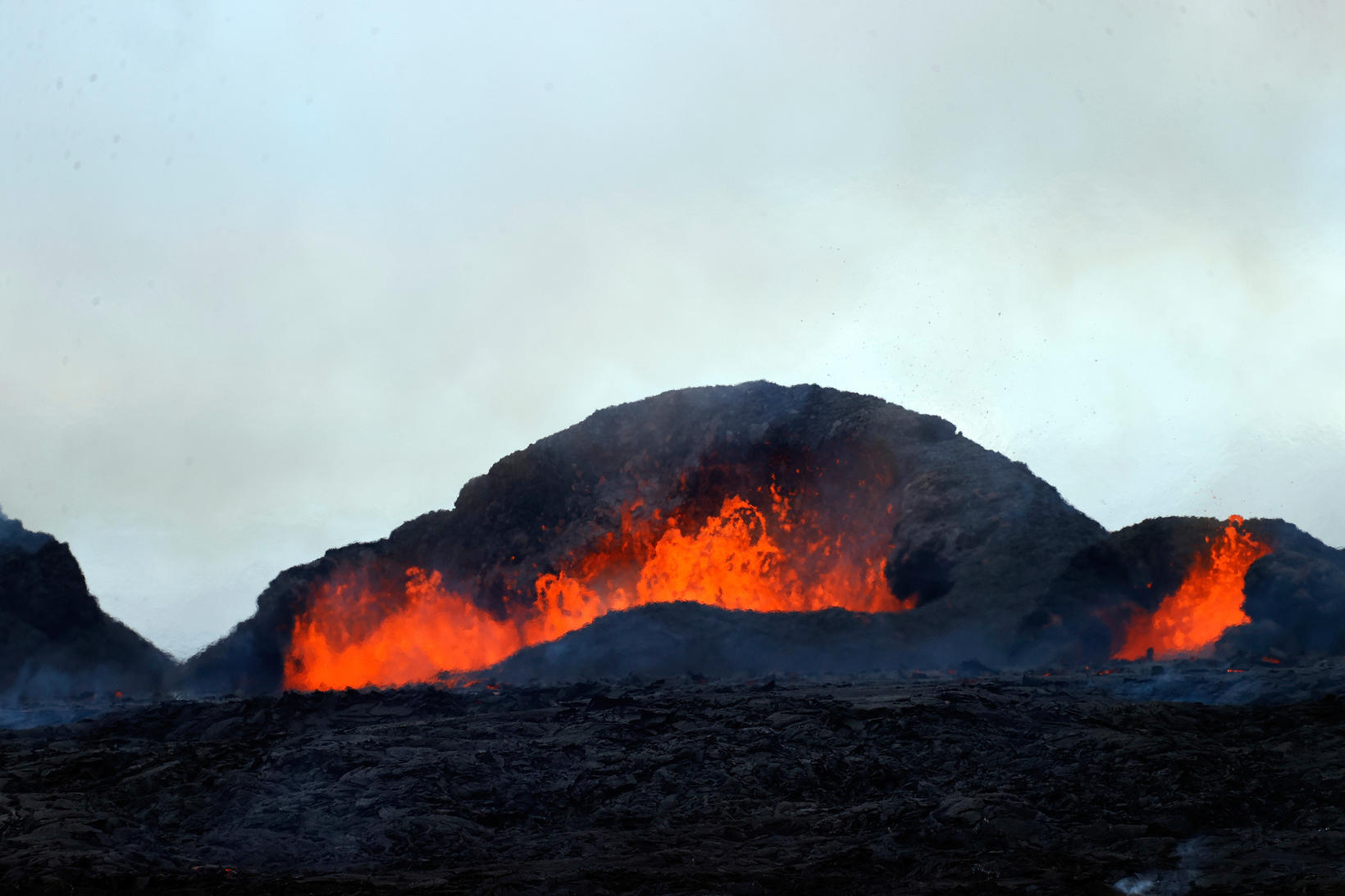High gas pollution detected in Hafnir
Gas pollution was very high in Grindavík last night, or around 9000 micrograms per cubic meter. Screenshot from mbl.is's webcams.
The current gas pollution levels in Hafnir are high due to the eruption at Sundhnúkagígar crater row, or about 2,200 micrograms per cubic meter.
The pollution is quite unhealthy for the most vulnerable and those with underlying respiratory diseases, according to Einar Hjörleifsson, a natural hazard specialist at the Icelandic Met Office.
“There is a dangerous pollution coming from the eruption and we need to keep an eye on where it is going and then react,” he says.
Most pollution at the eruption site
A large amount of gas pollution was measured in Grindavík last night, rising to 9,000 micrograms per cubic meter.
Today, gas pollution is most concentrated in the vicinity of the eruption site. Later, it moves eastwards and then passes through Grindavík and then out of the country, according to Hjörleifsson.
As for the path of the eruption, magma seems to be still accumulating in Melhólsnáma mine. It is not evident that lava is moving toward Grindavíkvegur road yet.
Gas pollution has been quite severe during the weekend from the eruption at Sundhnúkagígar crater row. mbl.is/Eggert Jóhannesson
Advised to close their windows
The Department of Civil Protection and Emergency Management encourages residents of Reykjanes peninsula to monitor air quality closely, but pollution levels have been high in Hafnir.
It is therefore recommended that residents in the area close windows and turn off ventilation, as stated in a notice from the Civil Protection. You can follow air quality on the website of the Environment Agency of Iceland, loftgaedi.is.
The announcement points to the website of the Directorate of Health as well, which discusses the health effects of pollution from the eruption.
“Eruption gas and sulfur dioxide can cause lethargy, headaches, eye and throat irritation, and other respiratory symptoms. The smallest particles of suspended particulate matter (PM 1 and 2.5) are dangerous to health because they can easily reach deep into the lungs.
Children and people with underlying heart and lung diseases should avoid outdoor activities for long periods, as well as outdoor activities, where there is air pollution, and keep windows closed.”










